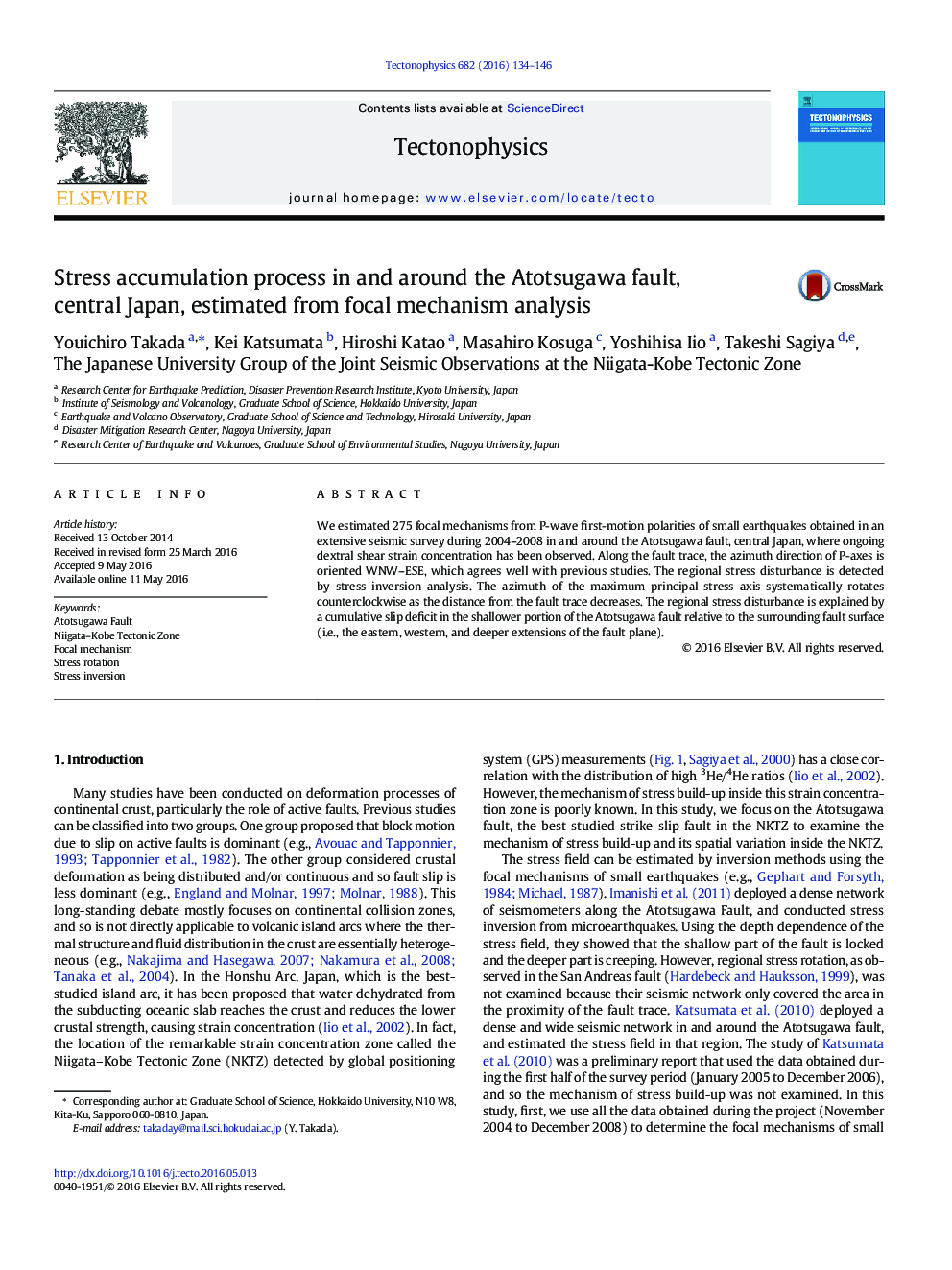| Article ID | Journal | Published Year | Pages | File Type |
|---|---|---|---|---|
| 4691309 | Tectonophysics | 2016 | 13 Pages |
•Focal mechanisms around the Atotsugawa fault are determined.•Maximum principal stress rotates 20° as distance from the fault decreases.•Slip deficits at shallow part of the fault cause these stress disturbances.
We estimated 275 focal mechanisms from P-wave first-motion polarities of small earthquakes obtained in an extensive seismic survey during 2004–2008 in and around the Atotsugawa fault, central Japan, where ongoing dextral shear strain concentration has been observed. Along the fault trace, the azimuth direction of P-axes is oriented WNW–ESE, which agrees well with previous studies. The regional stress disturbance is detected by stress inversion analysis. The azimuth of the maximum principal stress axis systematically rotates counterclockwise as the distance from the fault trace decreases. The regional stress disturbance is explained by a cumulative slip deficit in the shallower portion of the Atotsugawa fault relative to the surrounding fault surface (i.e., the eastern, western, and deeper extensions of the fault plane).
